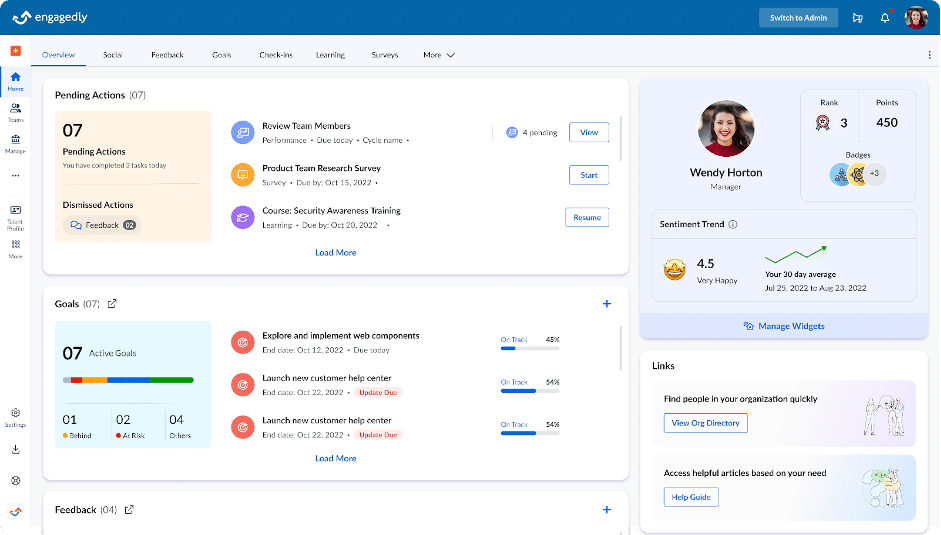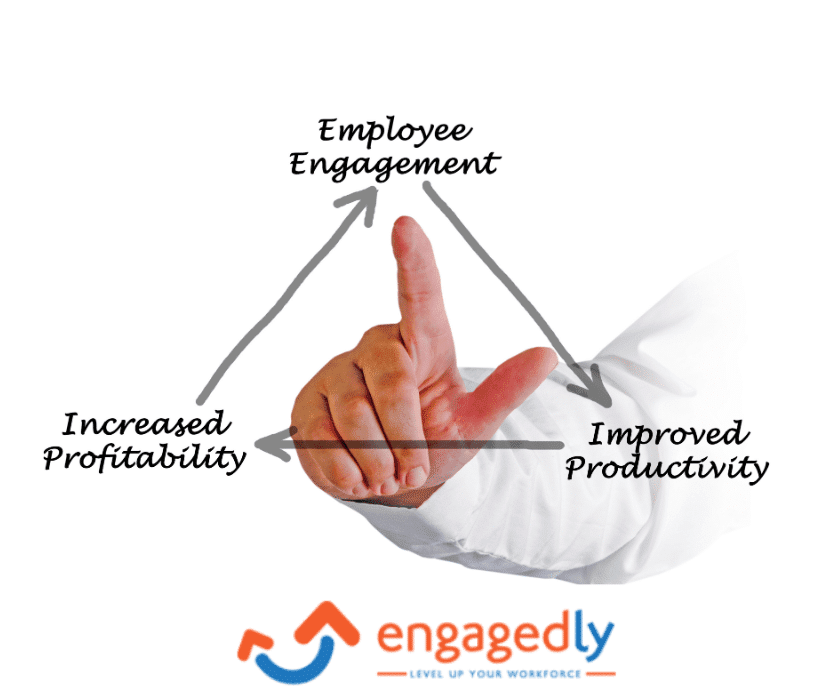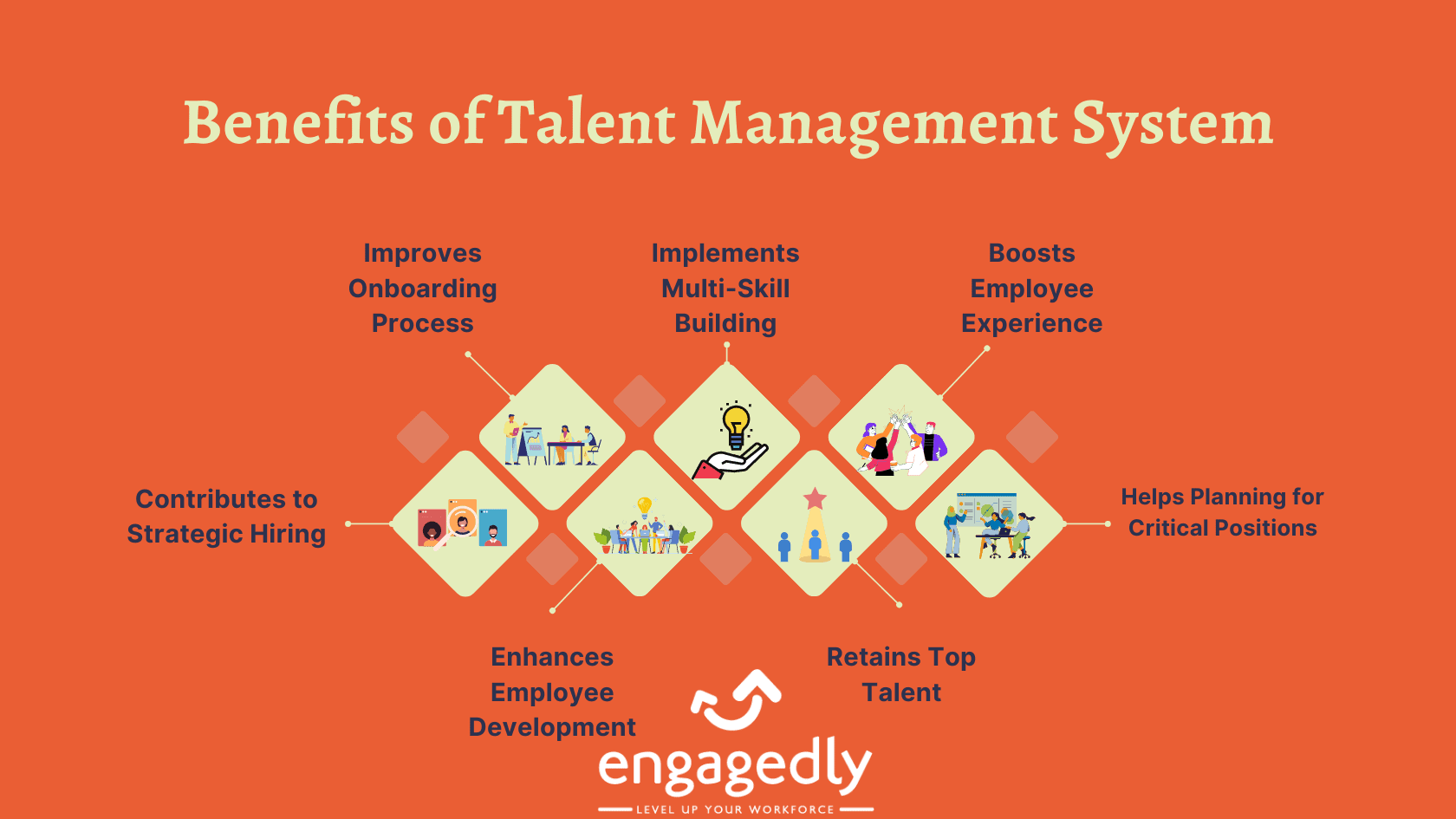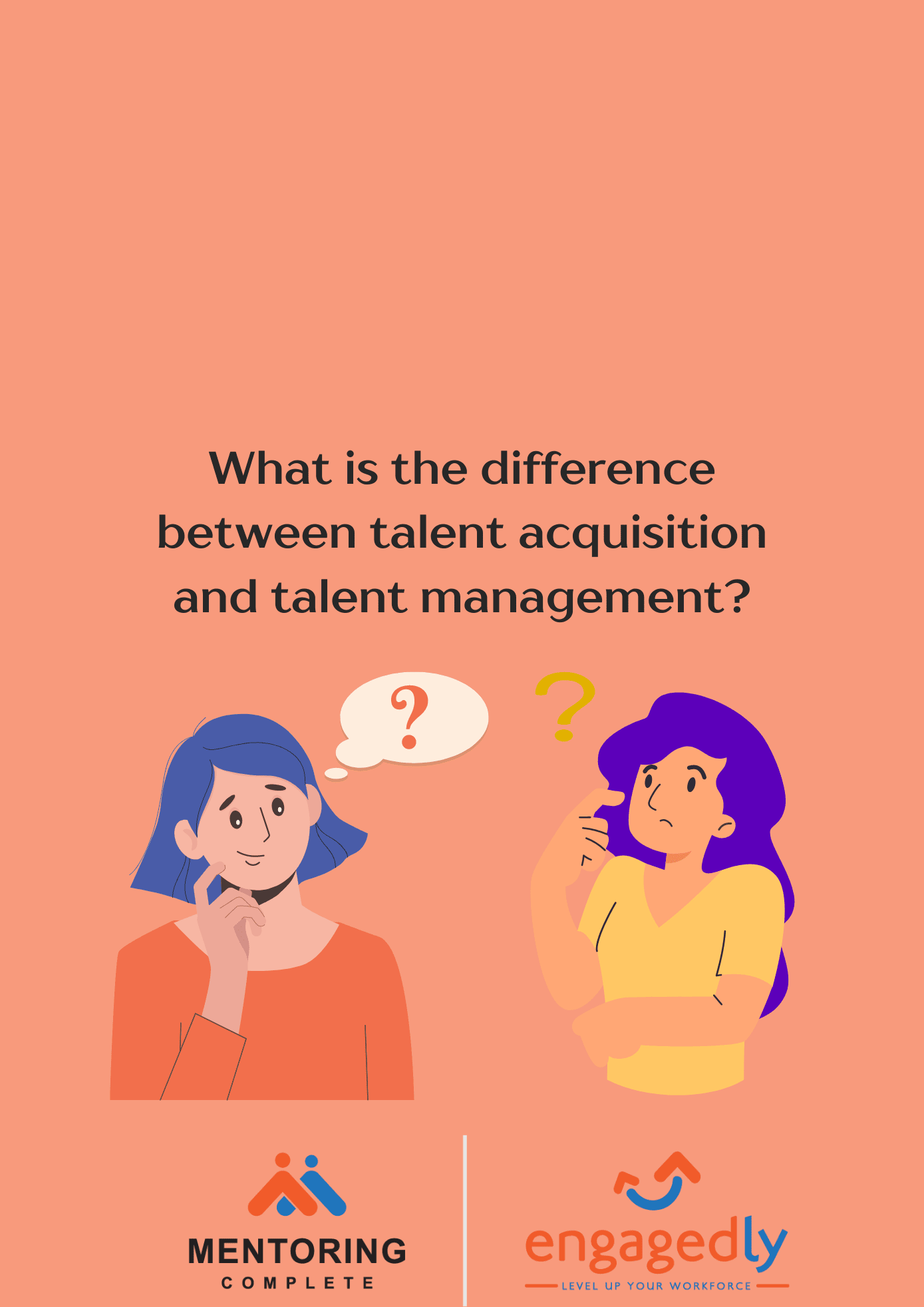Think of professional development not just as a ladder to climb but as a garden to nurture. Like a garden, it thrives on diversity, patience, and continuous care to truly flourish. And today, more than ever, investing in professional growth is essential—not just for staying relevant, but for thriving in an ever-evolving world.
Did you know that over 70% of employees say professional development makes them more engaged at work? In an era where technology is reshaping industries and creating new ones, adapting through learning is no longer optional. Professional development equips you with fresh skills and knowledge to handle these changes, boosting not only your confidence but also your job performance.
Employers, too, are taking notice. 94% of employees say they would stay longer at a company that invests in their career development. Those who prioritize growth often find themselves ahead in the race for promotions and opportunities.
Beyond career progression, professional development enhances your ability to think critically, solve problems effectively, and grow personally. It’s not just about checking off skills—it’s about becoming a more agile and thoughtful contributor in a rapidly changing professional landscape.
The real power of professional development lies in its deeper purpose. It’s not just about mastering tools or techniques but fostering adaptability, resilience, and a growth mindset. These traits help you confidently navigate challenges and seize opportunities, even in uncertain times.
What’s more, professional development encourages you to align your personal and professional goals with evolving trends and aspirations. It helps you define your purpose and unleash your potential.
When growth is intentional and forward-thinking, it becomes the foundation for long-term success—helping you achieve not just a career, but a meaningful, fulfilling life.
The Surface Level: Skills Acquisition
Skills-based development is a fundamental aspect of professional growth, encompassing technical, leadership, and soft skills. Together, these skills help create well-rounded professionals who can thrive in dynamic and evolving environments.
Technical skills form the foundation, enabling individuals to perform specific job-related tasks effectively, such as coding or data analysis. These are critical for operational excellence. However, in today’s diverse and collaborative workplaces, technical expertise alone is not enough.
Soft skills, including teamwork, problem-solving, and communication, bridge the gap between technical know-how and meaningful collaboration. These interpersonal abilities enhance team dynamics, foster stronger connections, and promote emotional intelligence, making professionals more adaptable and effective in navigating challenges.
Leadership skills focus on decision-making, vision, and the ability to inspire and guide others. They take professional growth a step further, empowering individuals to lead with confidence and purpose, whether managing teams or driving projects.
Still, the true essence of professional development extends beyond acquiring skills. It’s about nurturing adaptability, embracing change as a growth opportunity, and aligning personal aspirations with evolving trends. Above all, it helps individuals unlock their full potential, fostering personal development and long-term success.
By prioritizing these three skill categories, professionals can build a sustainable foundation for success, excelling in their current roles while preparing for future opportunities.
Why focusing solely on skills is limiting
Professional development is often viewed as the pursuit of expertise to excel in specific roles. While skills are undeniably important, relying solely on them can hinder long-term success and meaningful growth. True professional development goes beyond skills, focusing on adaptability, vision, and personal evolution.
Skills Can Become Outdated
In today’s fast-paced world, even the most valuable skills can quickly lose relevance. For instance, consider someone who mastered a now-defunct software like Flash. At the time, it was a sought-after skill, but with evolving technology, it has become obsolete. Similarly, industries are constantly introducing new tools and practices—what’s essential today might be irrelevant tomorrow.
By focusing only on skills, individuals risk falling into a cycle of playing catch-up. Instead, cultivating a growth mindset and adaptability ensures they can learn and acquire new skills when needed.
For example, a graphic designer who embraces adaptability can easily transition to tools like Adobe XD or Figma as they replace older platforms, staying ahead of the curve.
Overemphasis on Tasks vs. Holistic Growth
When professional development focuses solely on task-specific expertise, it often neglects the broader dimensions of growth. For example, a coder might excel at writing efficient code but struggle to collaborate effectively or think strategically when leading a project. This narrow focus can limit their career progression and ability to tackle complex challenges.
Holistic development, on the other hand, emphasizes skills like emotional intelligence and resilience. Consider a project manager who not only understands project timelines but also excels at motivating teams and resolving conflicts. These broader capabilities enable them to navigate challenges and deliver results effectively, even under pressure.
The Bigger Picture
Prioritizing holistic development helps professionals become not just skilled but also adaptable, visionary, and confident in facing challenges. For example, an entrepreneur might begin with technical skills like budgeting or marketing but must eventually develop leadership qualities and critical thinking to steer their business through uncertainties.
Professional development becomes a transformative tool when it focuses on long-term growth over short-term proficiency. By emphasizing adaptability and resilience, individuals can thrive in dynamic environments and build a foundation for sustained success.
The Deeper Purpose of Professional Development
1. Cultivating Adaptability
Adaptability—the ability to adjust to new environments, challenges, or opportunities—is essential in today’s fast-changing world. While professional development is often about gaining specific skills, its true purpose lies in fostering adaptability, enabling individuals to thrive amid uncertainty.
In a landscape shaped by market shifts, organizational changes, and technological advancements, professionals need more than technical expertise. They must embrace change positively and stay open to learning. For instance, a marketer transitioning to AI-driven tools like predictive analytics can navigate the shift smoothly with adaptability.
Adaptability goes beyond reacting to changes; it fosters proactive exploration, empowering professionals to seek growth opportunities.
Professional Development programs that emphasize critical thinking, resilience, and continuous learning prepare individuals for uncertainty by exposing them to diverse experiences. Rotational training, for example, equips employees to handle transitions confidently while broadening their perspectives.
By cultivating adaptability, professionals can ensure long-term success and relevance in any scenario—whether navigating industry shifts or seizing new opportunities. It transforms challenges into pathways for growth, making adaptability a cornerstone of impactful, future-ready careers.
2. Building a Growth Mindset
A growth mindset believes that it is possible to develop intelligence and abilities by means of learning and effort. It can play an essential role in professional development and ensures individuals embrace ongoing improvement rather than feeling restricted because of their present skills. It will be a fantastic idea to build a growth mindset for sensible professional development as well as long-term success.
Viewing Challenges as Opportunities for Improvement
A growth mindset empowers individuals to see challenges not as setbacks but as opportunities for learning and improvement. Obstacles in the workplace—whether it’s unfamiliar tasks, tight deadlines, or evolving roles—are inevitable. However, those with a growth mindset approach these hurdles as chances to enhance their skills and build resilience.
For example, tackling a demanding project with a new tool may seem daunting, but it can lead to mastering valuable competencies. Instead of avoiding these situations, professionals with this mindset embrace them, understanding that each challenge contributes to personal and professional growth.
Professional development programs play a key role in fostering this perspective. Through feedback mechanisms, problem-solving exercises, and learning opportunities, individuals learn to see mistakes as lessons rather than failures.
This shift not only boosts confidence but also encourages innovation. When people are unafraid of failure, they’re more willing to take calculated risks and experiment, paving the way for creative solutions and continuous improvement.
By viewing challenges positively, professionals can transform obstacles into stepping stones for success, driving both personal growth and workplace innovation.
Encouraging Self-Awareness and Reflection
Self-awareness is a key component of a growth mindset, helping individuals recognize their strengths, emotional responses, and areas for improvement. Professional development fosters self-awareness through feedback, mentorship, and assessments, providing valuable insights for personal growth.
Reflection, an essential practice, allows individuals to evaluate their progress, identify areas for development, and understand their responses to challenges. For example, reflecting on feedback from a mentor can help a professional refine their approach to problem-solving or communication.
By integrating self-awareness and reflection into professional development, individuals gain a clearer understanding of their potential and goals. This process helps them celebrate achievements while addressing areas needing improvement, fostering a cycle of continuous learning.
Over time, this approach builds emotional intelligence and adaptability, equipping individuals to navigate change effectively and sustain long-term growth in both personal and professional spheres.
The Deeper Purpose
Using professional development to establish a growth mindset will go beyond obtaining leadership or technical expertise. It will shape a resilient, curious, and proactive approach to work and life.
Professionals will be able to unlock the potential to develop continually by visualizing obstacles as opportunities while encouraging self-awareness. It will ensure career success in the long run.
Besides this, it will likewise promote personal fulfillment while aligning with the more profound objective of professional development – meaningful and sustainable growth.
3. Enhancing Emotional Intelligence
By the term “emotional intelligence” we refer to the ability to comprehend, recognize, and also manage emotions while navigating interpersonal connections effectively. It will help significantly in professional success while influencing decision-making, teamwork, and communication.
It is a fact that professional development is typically related to leadership or technical skills. It will enhance emotional intelligence while fostering sustainable and meaningful development.
Understanding and Managing Emotions
People will get help from professional development to become more aware of their emotions. Mentorship programs, workshops, and training will provide tools for the purpose of identifying feelings such as frustration, excitement, or stress. It also helps to comprehend how they impact behavior.
It is of prime importance to manage these emotions, especially in high-pressure situations. An individual with powerful emotional intelligence will be capable of remaining calm under stress. They can also maintain a positive outlook while making sensible decisions.
Self-regulation happens to be an essential component of emotional intelligence. People can make use of it to make thoughtful responses instead of reacting impulsively.
It is feasible for professional development programs emphasizing stress management, self-awareness, or mindfulness to improve this ability significantly. It will likewise allow professionals to stay effective and composed even when the situation is challenging.
Building Stronger Relationships
Social awareness, another key dimension of EI, helps individuals understand others’ perspectives, emotions, and needs. Professional development programs, such as communication training, team-building activities, and cultural sensitivity workshops, promote empathy and build stronger connections with colleagues, clients, and stakeholders.
High EI also enhances collaboration and conflict resolution, enabling professionals to mediate disputes, foster teamwork, and create inclusive environments. For example, a manager with strong EI can resolve a team disagreement constructively, ensuring alignment and morale in a diverse workplace.
The Deeper Purpose
Embracing emotional intelligence through professional development provides more than immediate workplace benefits—it fosters a growth-oriented mindset rooted in empathy, self-awareness, and adaptability. These traits help professionals navigate change, lead authentically, and embrace diversity.
Professional Development as a Long-Term Investment
1. Fostering Visionary Thinking
Visionary thinking will help us to anticipate upcoming trends and also match efforts with long-term ambition. This kind of mindset is nurtured by professional development, thus allowing people to foster strategic approaches and go beyond immediate tasks.
For instance, a marketing professional attending a future trends workshop can better predict industry shifts and align campaigns with emerging consumer needs. This strategic foresight lays the groundwork for sustainable career success.
Aligning Personal Growth with Long-Term Goals
People will get motivation from professional development to assess their professional and personal objectives. They will be able to comprehend their position in the future and the manner in which their present efforts direct them there.
For example, it is possible to prepare an expert by joining a leadership training program not only for their subsequent promotion but also for long-term roles.
This alignment will motivate people to take deliberate actions toward their ambitions by fostering a sense of purpose. Apart from this, it will likewise make sure that the skills required by them are customized to their overarching vision, and not random by any means.
Professionals will be able to chart a fulfilling and clear career path by matching personal development with long-term objectives.
Seeing the Bigger Picture in One’s Career and Industry
Visionary thinking will help us comprehend how the role of one person will fit into the wider context of their industry. On most occasions, professional development programs consist of technological advancements, insights into market trends, as well as global challenges.
Individuals can take advantage of these perspectives to get a clear idea beyond their immediate accountabilities. This will enable them to make meaningful contributions to the development of their organization.
Professional development allows people to adapt, innovate, and lead change by promoting this wider perspective. In this way, they will be able to position themselves perfectly within their departments and anticipate shifts.
A Long-Term Investment
It is possible to transform careers into a quest for impact and purpose from a series of jobs by fostering visionary thinking. Individuals will take advantage of this feature to grow sustainably with appropriate tools. They can likewise align their efforts with long-term success and make sensible contributions to their respective industries.
2. Encouraging Lifelong Learning
Lifelong learning implies a commitment to ongoing professional and personal development. It will help us to embrace a continuing journey of development while shifting the focus from attaining finite milestones. When visualized as a long-term investment, professional development will promote this mindset. It will help people to stay relevant and satisfied in their professions.
Shifting Focus from Milestones to Continuous Growth
Success is perceived by lots of professionals as a sequence of milestones. It might comprise getting a promotion, obtaining a degree, or learning a particular skill. Professional development will likewise encourage a wider perspective. It focuses on the fact that growth will not come to an end after reaching a particular milestone. On the other hand, it will go on throughout one’s profession.
In this fast-changing world of today, this particular shift in focus matters a lot. Innovative technologies, global trends, as well as evolving industries need constant adaptation. Professionals can stay ahead, explore innovative fields, improve their adaptability, and deepen their skills with the help of lifelong learning.
They will remain open to new opportunities by providing priority to ongoing learning. This will help them to convert challenges into stepping stones for development.
A Commitment to Growth
Individuals will be able to thrive in a continuously changing world by promoting lifelong learning via professional development. Apart from being concerned about obtaining skills, it is likewise related to fostering resilience, inquisitiveness, and a mindset that provides value to development as a lifelong journey. This particular approach will transform careers into evolving pathways of success and purpose.
3. Supporting Resilience and Well-Being
Well-being and resilience are of prime importance in terms of sustaining career success for the long term. Professional development will make contributions to both by providing individuals with strategies for coping, fostering balance, and making sure that they thrive in challenging situations.
Balancing Career Aspirations with Mental and Physical Health
Ambitious career objectives might result in burnout in some particular cases in case one neglects physical and mental health. Professional development programs focus on mindfulness, work-life balance, as well as stress management on most occasions. In this way, professionals can pursue their aspirations while maintaining their well-being as well.
For instance, leadership workshops might emphasize the significance of setting boundaries, allocating tasks, and providing priority to self-care. In the same way, it is possible to integrate wellness initiatives into professional growth to encourage proper nutrition, and regular exercise, in addition to mental health awareness.
These types of programs will make sure that individuals can attain their objectives without compromising their health by promoting a holistic approach.
Coping Strategies Learned Through Professional Development
People will get hold of the appropriate tools to cope with challenges successfully with the help of professional development. For example, training in EI will allow professionals to regulate emotions, manage stress, as well as navigate workplace conflicts. Problem-solving simulations or mindfulness practices along with other types of residence-building activities will prepare people to deal with setbacks confidently.
On top of this, development programs will foster mentorship and peer networks providing support during tough situations. A sense of encouragement and community will be created by learning from the experiences of other people and sharing challenges.
Practical Strategies to Embrace Holistic Professional Development
Holistic professional development is going to emphasize adaptability, personal development, and long-term success. In fact, it goes beyond technical skills. One needs deliberate strategies to expand his perspective and abilities while embracing this approach.
- Seek Mentorship and Feedback to Grow Beyond Technical Skills
Mentors will provide invaluable guidance to assist in navigating challenges. They will also help identify opportunities for growth. Feedback from supervisors, mentors, and peers will emphasize areas for enhancement beyond technical skills.
These can be emotional intelligence, leadership, and communication. It will be feasible to foster ongoing improvement and establish a comprehensive skill set by actively looking for feedback and including it in your development.
- Engage in Interdisciplinary Learning and Experiences
Your perspective will be broadened by exploring fields that are outside your area of expertise. It will likewise foster creativity. For example, tech experts might take advantage of comprehending business strategy. On the other hand, educators will be able to obtain perceptions from psychology.
Problem-solving abilities can be enhanced significantly by engaging in interdisciplinary learning. It can be via conferences, collaborative projects, or courses. You will also be prepared to face diverse challenges.
- Set Personal and Professional Goals That Focus on Growth, Not Just Performance
Although it is imperative to achieve targets, emphasizing only performance might restrict your development. Make it a point to set targets that will challenge you to learn innovative skills, enhance soft skills such as adaptability or empathy, or cope with unfamiliar responsibilities. You will be pushed beyond your comfort zone by growth-oriented targets. It will help to prepare you for more opportunities in the future.
Closing remarks
Professional development isn’t just about building expertise—it’s about shaping a future filled with purpose, growth, and resilience. In a world that’s constantly changing, limiting development to technical skills can hold you back.
True professional growth goes deeper, nurturing emotional intelligence, adaptability, and a forward-thinking mindset that helps individuals thrive through challenges and align their efforts with long-term aspirations.
Investing in professional development is investing in yourself. It’s a journey of continuous learning and self-discovery that turns careers into meaningful and fulfilling endeavors.
With the right tools and mindset, professional development transforms success from fleeting achievements into a purposeful and lasting legacy in both your personal and professional life.
FAQs
What role does emotional intelligence play in professional development?
EI will improve professional development by enhancing empathy, interpersonal skills, and self-awareness. Individuals will be able to navigate workplace dynamics, build stronger connections, and cope with stress using emotional intelligence. It will also foster a collaborative environment.
What is the connection between professional development and well-being?
Professional development will improve well-being by minimizing stress. This will be done through skill development, promoting work-life balance, and fostering self-awareness. Individuals can cope with challenges effectively using professional development. It will ensure sustainable career success and personal fulfilment.
What are practical strategies to embrace holistic professional development?
Particular strategies for holistic professional growth consist of engaging in interdisciplinary learning, looking for mentorship, reflecting on progress, providing priority to EI, setting growth-focused objectives, and long-term career success, as well as leadership.
What are examples of non-technical aspects of professional development?
Non-technical facets of professional development comprise leadership skills, emotional intelligence, effective communication, adaptability, teamwork, resilience, self-awareness, and time management, as well as promoting a growth mindset for holistic career and personal advancement.
How does professional development prepare individuals for leadership roles?
Professional development will prepare people for leadership by enhancing EI, decision-making, and communication expertise. It promotes strategic thinking, and adaptability, in addition to the capability of inspiring and guiding teams to achieve long-term organizational objectives.


































 Talent management can be defined as the organized, strategic process of getting the right talent onboard and supporting them to grow to their optimal skills while keeping organizational objectives in mind. Thus, the process involves identifying talent gaps and vacant positions, sourcing for and onboarding suitable candidates, later growing them within the system and developing needed skills, training for expertise with a future focus, and effectively engaging, retaining, and encouraging them to achieve long-term business goals.
Talent management can be defined as the organized, strategic process of getting the right talent onboard and supporting them to grow to their optimal skills while keeping organizational objectives in mind. Thus, the process involves identifying talent gaps and vacant positions, sourcing for and onboarding suitable candidates, later growing them within the system and developing needed skills, training for expertise with a future focus, and effectively engaging, retaining, and encouraging them to achieve long-term business goals.  The last few years have redefined HR in more ways than one and facilitated a transition from Traditional to
The last few years have redefined HR in more ways than one and facilitated a transition from Traditional to 

 Recognizing the pivotal role of leadership in fostering effective teamwork should be coupled with a strategic approach to nurturing future leaders. Organizations can follow the steps below to seamlessly integrate robust leadership development into their everyday activities:
Recognizing the pivotal role of leadership in fostering effective teamwork should be coupled with a strategic approach to nurturing future leaders. Organizations can follow the steps below to seamlessly integrate robust leadership development into their everyday activities:




























